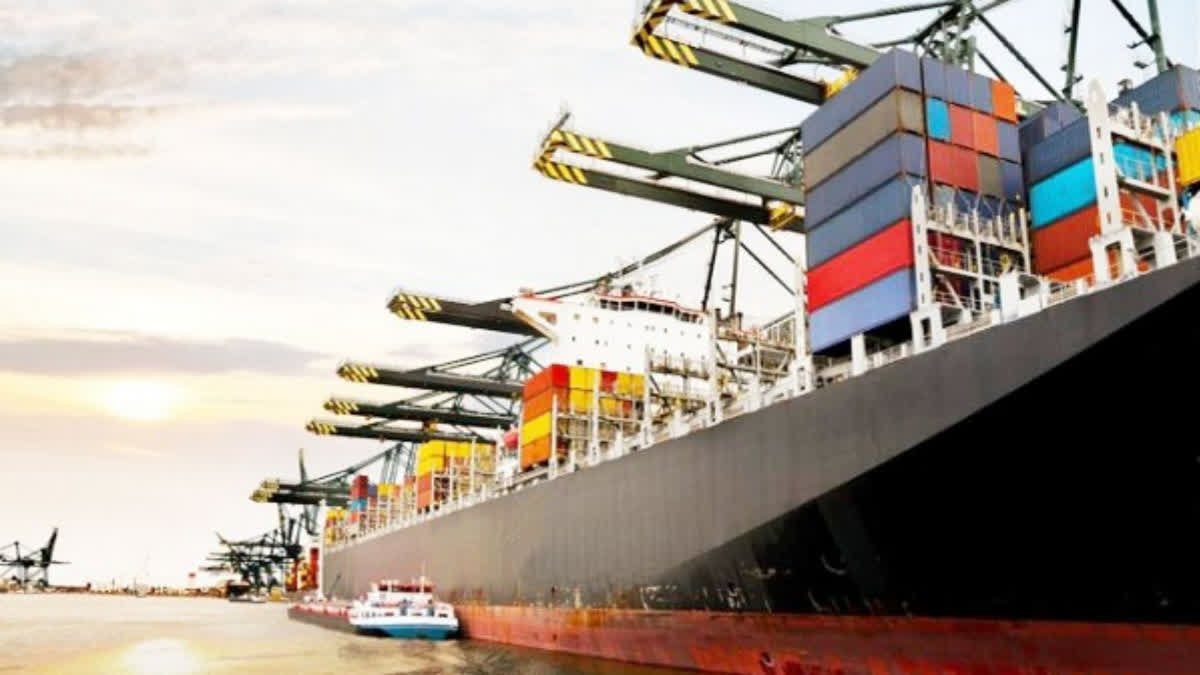New Delhi: A study by a Shillong-based think tank charts out how a new deep sea port being built in Bangladesh with Japanese aid will benefit India’s northeastern states in terms of economic development and connectivity.
The Matarbari port, which is under construction in Maheshkhali Upazila of Cox’s Bazar district, will be the first deep-sea port of Bangladesh and the country’s fourth sea port after Chittagong, Mongla and Payra.
According to the study titled ‘Assessing Connectivity between Northeast India and Bangladesh: Towards a Prosperous Bay of Bengal Region’ released by the Asian Confluence think tank, the “port will become the region’s most significant export-import hub, allowing mother ships with a draft greater than 16 metres to berth, compared to Chattogram (Chittagong) Port’s 9.5 meters”.
“It is anticipated to contribute 2 per cent to 3 per cent to the nation’s gross domestic product (GDP).” It stated. “The construction of the port project started in 2020 with development assistance of the JICA (Japan International Cooperation Agency). To start with, the project includes construction of two 600 MW power plants, a deep-sea port terminal, and a 14.5-km-long port channel.”
When completed in 2027, the port will boost connectivity with India’s northeastern and will also play a key role in maritime security in the Bay of Bengal which is right at the centre of the Indo-Pacific region. India, along with the US, Japan and Australia, are part of a Quad that is working for a free and open Indo-Pacific in the face of China’s hegemony in the region. The Indo-Pacific region stretches from the east coast of Japan to the east coast of Africa.
“When Bangladesh was looking for investors to develop a deep sea port, both China and Japan showed interest,” K. Yhome, Fellow in Asian Confluence, told ETV Bharat. “India became wary about China’s interest and complained to Bangladesh. Dhaka then concluded that having a China-led project will not be good for the region. After that, Japan came into the picture.”
Also read: Chinese warship’s port of call in Sri Lanka: Why Colombo can’t say no to Beijing
India and Japan are close partners and are jointly developing a number of connectivity projects in the Northeast and the neighbouring countries, including Bangladesh. The JICA is already providing developmental assistance for key connectivity and infrastructure projects in the Northeast.
According to Yhome, the reason why India and Japan came together to develop connectivity is because of what China is doing with its Belt and Road Initiative (BRI). The BRI is a global infrastructure development strategy adopted by the Chinese government in 2013 to invest in more than 150 countries and international organisations. It is considered a centrepiece of Chinese President Xi Jinping's foreign policy. The BRI forms a central component of Xi's "Major Country Diplomacy" strategy, which calls for China to assume a greater leadership role for global affairs in accordance with its rising power and status.
The BRI also includes what Western observers call China’s String of Pearls strategy. The String of Pearls refers to the network of Chinese military and commercial facilities and relationships along its sea lines of communication, which extend from the Chinese mainland to Port Sudan in the Horn of Africa. The sea lines run through several major maritime choke points such as the Strait of Mandeb, the Strait of Malacca, the Strait of Hormuz, and the Lombok Strait as well as other strategic maritime centres in Pakistan, Sri Lanka, Bangladesh, the Maldives, and Somalia.
Defence analysts say that the String of Pearls strategy threatens India’s national security. It would encircle India and threaten its power projection, trade, and maritime and territorial integrity.
India is using a multi-pronged strategy to counter the Chinese String of Pearls strategy. The strategy involves building ports, extensive coastal surveillance radar (CSR) systems to track Chinese warships and submarines, importing state-of-the-art surveillance planes which can track down Chinese submarines, operating airports near the border with China, deepening defence ties and expanding bilateral relations with South Asian countries, island nations in Indian Ocean region, Southeast Asian nations and carrying out regular military exercises with the navies of the US, Japan, and Australia.
That is why the Matarbari deep sea port being built with Japanese support has come as a shot in the arm for New Delhi’s defence strategy. India has already built the Sittwe port in Myanmar, east of the Matarbari port. The Haldia port in West Bengal is to the west of Matarbari. “India and Japan have come together to provide an alternative to China’s BRI,” Yhome explained. “Reducing China’s footprint in the region is of strategic interest for India.”
He said that to connect the Indian Ocean with the Pacific Ocean, development of India’s northeastern region, the Andaman and Nicobar Islands, the eastern coast of India and Bangladesh is important. “Building an integrated network of connectivity and infrastructure projects is critical,” Yhome said. “From that perspective, the Matarbari port is critical. It could well be a major hub for trade and connectivity within the Bay of Bengal region.”



